Five key issues for the U.S. pork industry
Data on hog farm employment shows average wages increased about 10% over past year while number of employees was down 2%.

While domestic pork demand has been robust over the past two years, continued strength in the new year will depend on several factors. Rising interest rates and elevated prices for housing and groceries could further impact real and disposable incomes for consumers, which could contribute to weaker pork demand.
After declining 2.5% in 2022, the USDA is projecting growth in U.S. pork production in 2023, however this comes on top of a record high year for raising pigs with high feed and input costs as well as a severe labor shortage.
Despite these challenges, the National Pork Producers Council points out the United States maintains its competitive advantage as one of the most cost-efficient producers in the world and that the U.S. pork industry has a positive ripple effect on the U.S. economy, supporting sales, jobs and value added gross domestic product within agriculture and other industries.
"The U.S. pork industry is a pillar of the U.S. economy, supporting jobs, sales, and value-added activity throughout the pork supply chain," says Lori Stevermer, NPPC vice president and pork producer from Easton, Minnesota. "It is important to raise awareness of the economic contributions made by pork production and highlight the current economic and policy issues impacting producer success."
On Tuesday, NPPC released its latest pork industry economic update summarizing five key pork industry market indicators through January 2023.
Consumer pork demand
According to the Consumer Price Index, pork prices increased just 1.5% over the past year, as overall grocery prices jumped 11.8%., housing prices up 8.0% and household energy prices up 16.2%.
Data from the USDA Economic Research Service indicates that retail pork price peaked at $5.05 per pound in October but declined in November and December. The amount of pork available for domestic consumption was steady from 2021 to 2022 at 51.1 pounds per person.
"Consumer pork demand has been very strong over the past two years, and as we head into 2023, there are several important factors to watch," says NPPC Staff Economist Holly Cook. "The first being that consumer real incomes continue to decline compared to a year ago due to rising prices for things like groceries, housing and energy and lower real incomes could lead to weaker demand for things like meat and pork.
"But on the positive side, if pork remains a relatively affordable protein option, and if consumer preferences for pork products are sustained, that would be positive for demand this year."
Projected growth
The latest quarterly USDA Hogs and Pigs Report pegged the total number of swine in the United States on Dec. 1 at 73.1 million, the lowest since 2016. Since December 2019, producers have reduced the size of the U.S. breeding herd by 400,000 sows, or 6.1%, while the number of market hogs in the United States was down 2% from December 2021.
NPPC points out these market hog inventories could imply that hog slaughter could be down about 2% for the first half of the year. USDA is projecting a 1.8% increase in pork production for 2023, with much of that growth coming in the fourth quarter.
Labor shortages
Current projections indicate that the existing U.S. workforce will not be able to offset pork industry shortages. NPPC is urging Congress to make ag visa reform a top priority this year, including making the H-2A visa program available for year-round agriculture, says Cook.
"So far this year, the available reports show that there's still little slack in the national labor market with very low unemployment and more than 11 million job openings in the U.S. And data on hog farm employment specifically shows that average wages increased about 10% over the past year while the number of employees was down 2%," Cook says. "So given the long-term labor force projections and additional challenges that we have in rural areas, it seems that the solution to pork industry labor issues will need to come through agricultural visa reform."
Production costs
The cost of raising hogs in the United States increased 21% from 2021 to 2022 and 43% compared with 2020, according to estimates from Iowa State University Extension. Feed costs increased 24% while other expenses such as labor, transportation and energy were 18% higher than last year.
Even with elevated costs, NPPC points out the United States maintains its competitive advantage as one of the most cost-efficient producers in the world. Aside from select regions in Brazil, the United States has the lowest cost of feed, labor and variable expenses, according to data from InterPIG.
Ripple effect
Based on 2021 levels of production, the pork industry supports approximately 613,000 jobs, $36 billion in personal incomes and $57 billion in value added, and the economic contributions of pig farming reach well beyond the farm.
In addition to the quarterly update, NPPC released a national and 22 state-level economic reports last year. These reports highlight how the pork industry contributes at a grassroots level and illustrate the breadth of the industry producing affordable, safe and nutritious pork for consumers worldwide.
About the Author(s)
You May Also Like





